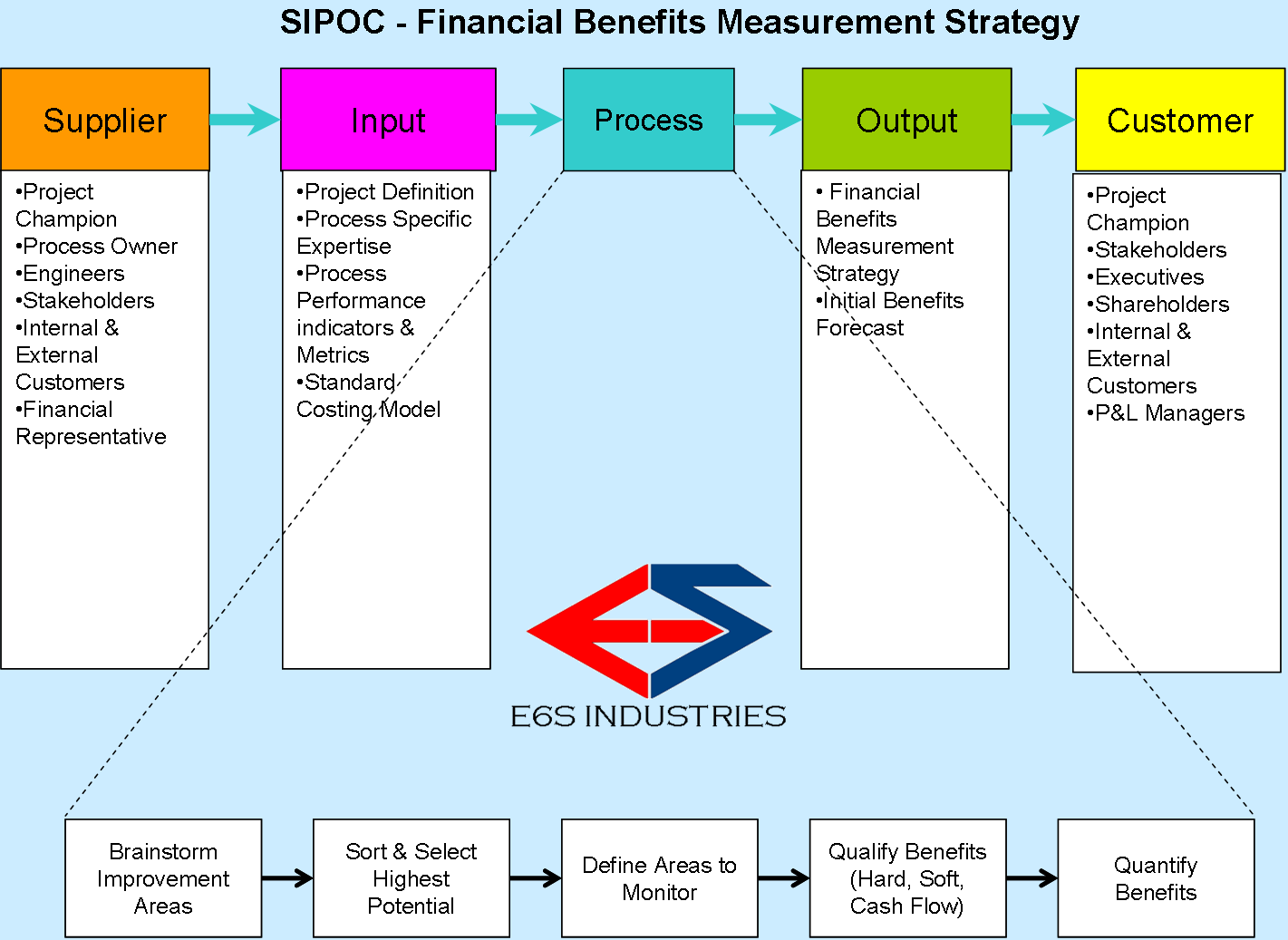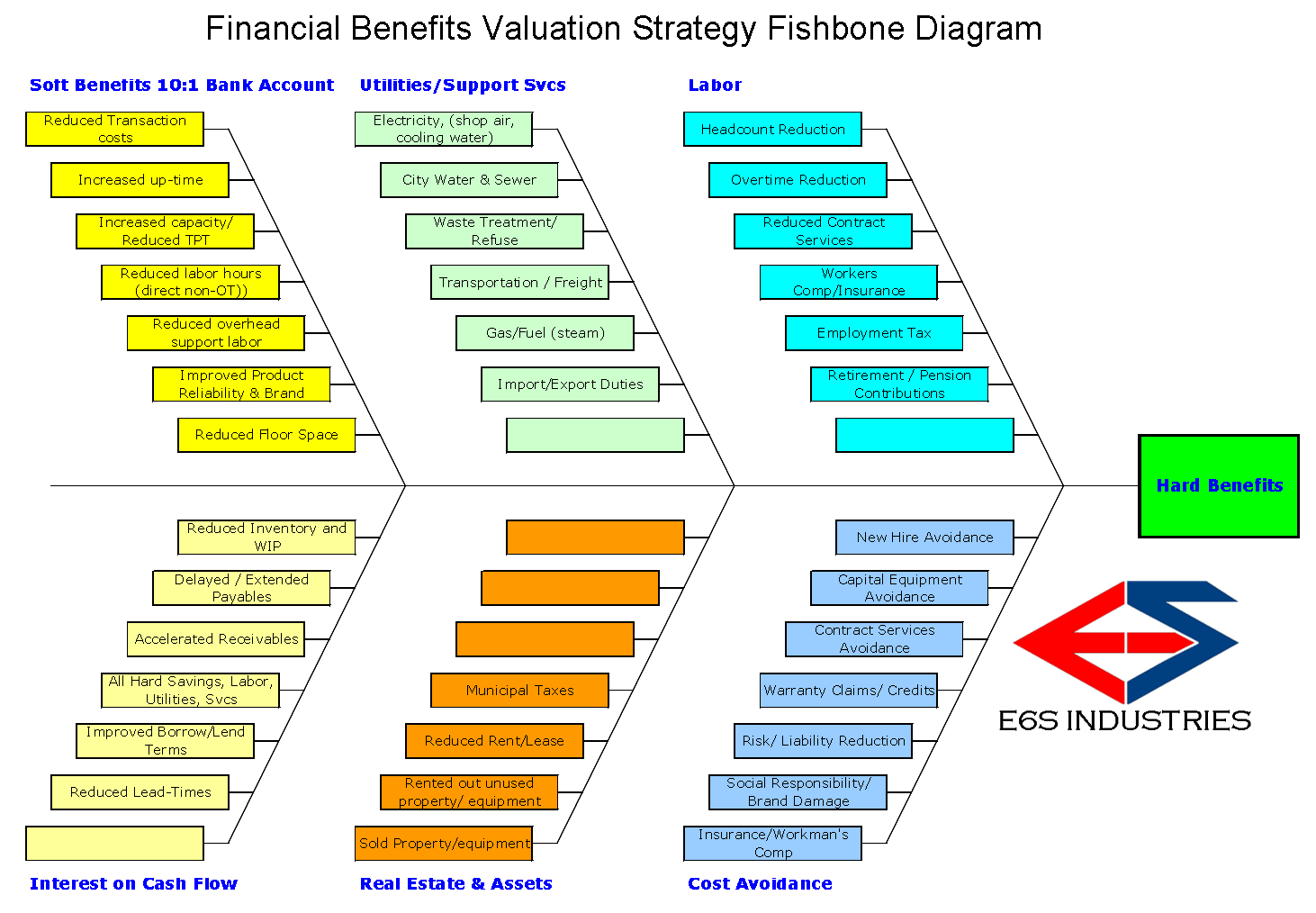E6S-018 Benefits Valuation Strategy - Financial Benefits Part 3A
***Search for Hidden Treasure***
I Most Black Belts do not want to get into the Financial Benefits, but when they get called to the carpet for their claims (or lack of), by upper management, they can look very foolish and have their projects lose credibility. Defining a clear strategy up front to show where you will look for financial benefits (i.e. the hidden treasure) will head off these objections and gain a consensus early on for where, what, and how you will measure financial benefits.
II How to develop a financial benefits strategy
a. SIPOC,
b. Process Flow
i. Brainstorm – Fishbone, Affinity Diagram
ii. Sort & Select – Prioritize – Multi-vote, Group consensus, (not likely big enough for a C&E or other long tool)
iii. Define Areas to Monitor – Key Step often missed up front
1. How will you measure these changes?
a. Reports in ERP system? (Orders, Sales, Scrap, OT hrs)
b. Financial reports?
iv. Qualify Benefits
1. Determine if these are Hard Benefits (Energy, Labor, Increased Sales), Soft Benefits (Cost Avoidance, Real-estate, Unit Labor Savings, Strategic Value), Or Cash Flow Improvements.
2. Report Separately. Be very transparent on how benefits are classified.
3. Determine which Soft Benefits go into the Bank Account for 10:1 conversion.
v. Quantify Benefits
1. Use standard cost models to quantify
2. Monitor for life of Project and Realization Phase.
a. Initial Benefits Forecast – Use Benefits Strategy, Baseline and Target to estimate approximately the approximate value of the project. ~ 80% accuracy.
b. Where to look? See Fishbone for possibilities
i. Changes based on project type
1. Yield improvement/Defect Reduction - Manufacturing
2. Through-put-time reduction (i.e. Lean) – Manufacturing
3. TPT reduction - Transactional – BPM
4. Yield improvement/Defect Reduction – Transactional – BPM
5. Inventory reduction
ii. Example : Improving (manufacturing) Process yields (IPY) from 85% to 95%
1. Potential Hard Benefits (reduction in consumable resources)
a. Scrap reduction
b. Reduced Over-time hours
c. Reduced Utility and Energy consumption
d. Interest value on reduced raw material usage/purchase
e. Reduced customer returns/warranty claims
f. Reduced expedite costs
2. Soft Benefits
a. Soft Benefits Bank Account
i. Reduced direct labor for excess runs, rework and testing
ii. Reduced Real-estate for rework WIP
iii. Increased process throughput/capacity
b. Customer Satisfaction and Brand Power
i. Improved product reliability and consistency at customer
ii. Reduced Cost-in-Use
iii. Improved product availability

